#diy ddr pad
Text
Dear Sephiroth: (a letter to a fictional character, because why not) #48
I did it!!! I finally did the thing!! I did it with help!!
Look!!!

I took a broken Dance Dance Revolution (DDR for short!) pad, which wasn't a very good pad to begin with for a variety of reasons, and turned it into a DDR pad that actually works!! I'll show you how!!
There were a lot of steps involved with this, but obviously, the very first step was to take the broken DDR pad apart and figure out how it works:

As it turns out, on the inside there are two sheets of plastic with conductive paint on the inside. When the conductive paint on the top sheet touches the conductive paint on the bottom sheet, a button press is recorded! A thin foam sheet with holes perforated in specific spots is put in between the two sheets of plastic, such that the conductive paint only touches if you step on certain parts of the pad.
The pad was broken because the plastic sheeting with the conductive paint ended up being crunched up in certain spots, which made it more difficult for the paint to conduct properly. After taking the pad apart, my husband and I used packing tape on the sides of the sheets without conductive paint to smooth out the wrinkles and reinforce it.
When the crunched-up sections were able to lie flat in a satisfactory fashion, I then used a staple gun to affix the bottom plastic sheet to a very sturdy piece of board. From there, it was time to reapply the foam in the correct orientation. That was also stapled down. Then finally, I aligned the top sheet of plastic with the bottom sheet (the foam was slightly translucent even in the parts without holes, so this was relatively easy), and stapled that down, too. Here was the result:

After that, you have to protect it with the sturdy plastic cover. I wanted a pad where the arrows were slightly raised, and I wasn't going to use the foam bottom of the pad for anything, so I cut little squares in the shape of the arrow buttons and applied them to the bottom of the plastic cover, like so:

And then I flipped it over, aligned it with the plastic sheeting, and stapled it down!
And do you want to know what??? IT WORKS!!! So far, it works better than any other pad I've ever owned, and that includes my old RedOctane that gave out after 10 years of heavy use (RIP, my trusty RedOctane; I miss you dearly).
DDR is a very old game at this point, so they don't make high quality pads like the ones RedOctane used to make anymore. RedOctane as a company no longer even exists. It's a real shame.
Anyhoot!! I went and played one of my favorite DDR songs on Stepmania, on Expert level difficulty! The timing of this pad couldn't be better (though I wish I could say the same for my stamina at this point, hahaha!), and despite the fact that I am very much not used to this kind of exercise anymore, I still managed to get an A!

And the best part about it is that it's HEAVY. The wood that the pad is stapled to is fairly weighty!! This means it doesn't slide around on the floor all crazy when I am using it, and that's a HUGE bonus!! I've sprained ankles in the past from mis-stepping on a thick foam pad that moved without me realizing it while I used it, and goodness me, such an occurrence is NOT a fun time!!
Now that I have a pad that works properly and a funky green half-oval that can stick my ribs back together after the fact, I'm hoping to be able to play more DDR in the very near future! Maybe if I can get my stamina back and start playing on Expert mode all the time again, I'll even record a little video for you of me derping around on my Frankenpad! It'll look ridiculous, but it'll be fun!! Hahaha!
I'm really pleased with how this turned out; it works a lot better than I expected for a first attempt at trying anything like this! I'm hoping to make another one! If I do this again in the near future, I should do a better job, because next time I'll have a better understanding of what to do and what to expect! Then I can play with multiple people at the same time!! And that would be amazing!
Have you ever built anything cool? Heck, have you built anything that you think is uncool? If you have, then I wish you could tell me about it! I suppose I'll have to settle just for asking without ever receiving any answer, hahaha... Oh well.
I think I'll end this letter here for now. As you might expect, my grip flexors are VERY angry with me right now because repetitive uses of the staple gun is not something that squishy noodle-arms like mine are accustomed to, hahaha! Also, I moved around a lot, both for the construction of this and for testing it, and so my ribs are pretty angry at me, too... Sheesh...
I'll work at getting my stamina back so that I can send you a neat video. Count on it, okay?
Please stay safe until then. Remember you are loved. Remember that you are human. Make good and kind choices. Take nice care of yourself. And if you can spare the time, maybe try to see what sorts of things you can build, even if it's something silly like a little person made of sticks and twine. Building things is good for humans; it doesn't have to have a use.
I gotta rest now. I promise I'll have a bunch of amazing pictures to share with you tomorrow (but I'm not gonna tell you what they are gonna be pictures of!! I'm gonna leave you in suspense!!! NEENER NEENER NEENER!!! Hahahaha!), so just you wait...
I'll write to you again tomorrow. So don't disappear anywhere, okay? Promise me.
Your friend,
Lumine
#sephiroth#ThankYouFFVIIDevs#ThankYouFF7Devs#ThankYouSephiroth#final fantasy vii#final fantasy 7#ff7#ffvii#final fantasy vii crisis core#final fantasy 7 crisis core#final fantasy crisis core#ffvii crisis core#ff7 crisis core#crisis core#ff7r#final fantasy vii remake#final fantasy 7 remake#ffvii remake#ff7 remake#final fantasy vii rebirth#final fantasy 7 rebirth#ffvii rebirth#ff7 rebirth#final fantasy 7 ever crisis#ffvii ever crisis#ff7 ever crisis#ffvii first soldier#diy ddr pad#dance dance revolution#wholesome
11 notes
·
View notes
Text
Harley, Technology, and Social Media
Harley has an Instagram, a Telegram (don’t be weird, it’s for the privacy. She uses it to plot heists or communicate with other rogues), is on tumblr but doesn’t really create content, it’s mostly just for vibes, has a Pinterest for fashion inspiration and diy stuff, and of course is on twitter. I wonder...and you know, I might catch flack for this, but whatever...I wonder if she’s on OnlyFans. I don’t think she’d do any one on one stuff but I could see her offering nudes or doing a Q&A video topless/naked.
She has a smart phone and a burner. Harley is an Android user but her phones are hacked and encrypted for the sake of security so the police can’t track her phone if she you know, is up to shady shit. Unfortunately, since she’s destruction prone, she often just has her burner while she’s getting her smart phone fixed. Harley will occasionally use a phone that hasn’t been messed with, but she will then be extremely careful not to be involved in anything that could get her thrown back in Arkham or Blackgate.
Harley loves video games. She’s a console gamer, though is usually a generation or two behind (unless she goes out to steal one). She loves a good FPS and talks shit with the best of them on voice. Likes a good battle royal (MOBA? look idek, I don’t play those kinds of games because I’m not very competitive and it all kind of intimidates me). I don’t think she’d be on Fortnite, despite the aesthetic being very her, but I can imagine that she played Overwatch, has moved on to DOTA, whatever else is popular aside from Fortnite? You get the idea. She plays some RPGs, but is very picky about the combat system. Harley likes action or real time combat. Turn based bores her to tears. Other games that she likes: Stardew Valley, (the good) Sonic games, mobile puzzle games, and rhythm games (particularly the dancing ones with pads. Like you better believe she was all over DDR in the arcades).
I can’t be emphasized enough that Harley is very aware that social media tends toward being very invasive when it comes to privacy. She’s not verified on any platform, and is careful not to indicate her location, encrypts as much as she can, uses VPNs, and fakes her IP address in general. Harley doesn’t film anything illegal that she or any of her friends are doing. On Insta she’s basically an e-girl, and on twitter she’s a shit poster and bit of a troll.
#meta#idek idek i love the idea of her playing dumb on social media too#like lol idek how do you know i'm the REAL Harley Quinn?
4 notes
·
View notes
Text
Build Your Own Retro Gaming Handheld With ClockworkPi GameShell
Our verdict of the ClockworkPI GameShell:
GameShell is a retro gaming tribute that lets you fulfil that dream of programming your own 8-bit or 16-bit game. While it has some minor issues, no other dedicated device promises so much, which makes the GameShell that bit more special.710
Want to game on the go, but unsure about squeezing your favorite single-board computer into that old Nintendo Gameboy? What you need is a portable games console that has all the retro gaming in it you can handle, right?
The GameShell portable console from Clockwork looks and feels like a Nintendo Gameboy and comes with retro gaming software preinstalled. Better still, it’s a DIY kit, which means you still get the satisfaction of building the GameShell yourself, with some customization options. It’s currently retailing for $159, though the price may go up after the initial launch period.
Prepare for retro gaming awesomeness.
youtube
It’s a Gameboy-style DIY Handheld Games Console
The explosion of retro gaming over the past few years has resulted in countless DIY projects aiming for mobile gaming.
You’ve probably seen Raspberry Pi computers squeezed into portable DVD players and even old Nintendo Gameboys. The Clockwork GameShell takes this idea of portable retro gaming and runs with it. You basically have the chance to play your favorite games on the go, on a device you’ve built and customized.
Highly Hackable and Open Source
A successful Kickstarter campaign that raised over $290,000 in 2017, the GameShell features a custom-built board, ClockworkPi v3.1.
This open source design is a modular, portable gaming system, visually reminiscent of the Gameboy, that ships in kit form, ready to be snapped together.
Thanks to a dedicated operating system and retro emulation software, you can enjoy thousands of classic games.
But it’s not all about playing retro games.
The GameShell also features support for programming languages including:
C
Python
Lua
LISP
Games can be created on the device, or existing projects modified.
There’s more, however: the GameShell’s outward appearance can be customized. Ultimately, you end up with a programmable, portable game console that looks how you want, and plays the games you love.
What’s in the Box?
This is a true kit-based experience, and in the box you’ll find a collection of labels for customization, along with a guide, the case components, and the electronics.
The GameShell’s hardware is logically sorted into boxes; one holds the front of the case, another the power components, etc. Five boxes are included in all and building the handheld console means working through these components in turn.
No soldering is required. All you need to do is follow the five-stage guide and be reasonably confident that you can plug things in.
Similarly, no screws are included, as they’re also not required. Mounting the hardware components relies on the design of the case, making this a surprisingly simple build.
This Is a Modular Portable System
Inside the case, you might expect to get direct access to the components.
However, it doesn’t quite work like that.
The GameShell is a modular system, meaning that the five key components are housed in their own plastic case. So, there’s a case for the 320×240 px display, a case for the mainboard, and a case for the battery. The D-Pad controls also sit in their own case, as does the speaker.
Each module is connected by pluggable wires. Most importantly, perhaps, the modules can theoretically be replaced. For example, if a powerful new CPI mainboard was released, that could be purchased and used to easily replace the current version.
CPI Mainboard System Spec
All of this is made possible thanks to the CPI Mainboard (v3.1) which features a 1GHz quad-core Cortex-A7 CPU, Mali GPU, 1GB DDR memory, and onboard Wi-Fi and Bluetooth. There’s also a micro HDMI port and micro USB connector, audio out, and GPIOs.
This hardware is more than adequate to play most retro games, but you’ll find the GameShell is capable of more.
Note that the 1050mAh battery is pretty small and as such as a low capacity. You can expect to get around 90-120 minutes of play time out of a single charge.
Building the Clockwork GameShell Console
The GameShell console is surprisingly straightforward to put together. Following the steps in the guide I was able to build a working portable game console inside 30 minutes.
Now, although the turnaround was surprisingly short, it wasn’t plain sailing all the way.
For example, while snapping the modules into their cases is easy enough, hooking up the display to the CPI mainboard was a pain. I had to remove the CPI from its modular casing to complete the connection and secure the cable, which seems like a flaw in the design.
Then there’s the general mess that the console appears to be once the modules are connected. Until they’re clicked into place within the main case, the GameShell resembles an electronic octopus.
Finally snapping the case together and securing it with the plastic “wheel locks” is satisfying.
However, if you forget to insert the microSD card as I did, things can get a bit messy. The microSD card slot is on the back of the mainboard module, so this means removing the front of the case, then the display, and then the mainboard module to gain access.
This would have been avoided if I’d inserted the microSD card earlier!
Boot Up With a Pre-Installed microSD Card
On the SD card, the Clockwork OS is preinstalled. This is based on Debian 9 ARMhf, and the Linux Kernel 4.1x. Various software can be run on this, including PICO 8, LOVE2D, PyGame, Phaser.io, Libretro, and other game engines.
The GameShell user interface is based on a 320×240 pixel resolution and controlled using the D-Pad control.
This monochrome-style UI lets you easily navigate the GameShell’s features. You can adjust settings, launch software, play music, and access the ClockworkPI tiny cloud using the standard controls.
It’s easy, comfortable, and generally pleasing to use.
Retro Gaming With the GameShell
The key draw for the GameShell is retro gaming, so how is it?
Well, it’s pretty good. Various retro emulators have been adapted for it, with MAME, Pcsx, MGBA, and NESTOPIA all pre-installed.
There’s even RetroArch for other retro options, along with some on-board games such as FreeDOOM and CaveStory.
Meanwhile, retro gaming ROMs can be added via the Tiny Cloud, a portion of the GameShell’s storage that is available via your local network.
It sounds great, and it is, but the GameShell isn’t perfect. For example, there’s currently no OTG support, which means plugging in a keyboard for some games isn’t possible.
Customizing the GameShell Console
Various labels are included with the GameShell for decorating the console with some retro iconography. But if this isn’t your cup of tea, you can stick to the basic white, amber, or red design.
Not enough? Well, Clockwork has made the STL files available to buy for a nominal sum. If you fancy 3D printing your own customized module housings or a new case, that’s ideal.
And then there’s the Lightkey controller, which can be mounted on the back of your GameShell. This brings additional controls to your retro gaming, in case the D-Pad is short of buttons for your favorite games.
Open Source, Hackable… So What Else Does It Do?
One of the key features of the GameShell is the inclusion of the PICO-8 software. This is D-Pad controlled software that enables the creation of new games.
Except, it’s not actually included.
A shortcut in the main UI menu just freezes the GameShell when selected, with restarting the console the only solution.
The reason for this seems to be that PICO-8 is software that you need to buy separately (just $15). Once this is done, the shortcut then works. Fortunately, smart Clockwork Forum members have worked out how to install the PICO-8 software.
Wi-Fi set up is remarkably simple, meanwhile, which is vital if you need to use the Tiny Cloud or access the device via SSH.
In addition to the GameShell’s basic portability, you can also plug it into a monitor using the micro HDMI port. From here, you can use the D-Pad controls, or connect a Bluetooth controller to play a game. Note that the resolution barely changes.
Instead, the output from the GameShell is centered on your HDTV display, surrounded by images from the GameShell instruction manual.
GameShell Issues and Community Support Online
The GameShell is nice to use, but it isn’t without its problems.
For instance, an update applied during testing for our review resulted in the UI failing to boot. Stranded at the command line, and with no keyboard input, I had to connect to the device via SSH, and even then, the usual Linux commands for launching a desktop environment failed.
Eventually, I had to seek help on the Clockwork support forum. Now, this was not an unpleasant experience, with support delivered to me promptly, and the issue resolved within an hour. The same update (or the solution) resulted in the UI button commands to be incorrectly labeled on screen. Sure, it’s fixable, but it feels as though some oversight is required to avoid basic problems that shouldn’t be happening.
If you’re not familiar with SSH, Linux, or editing files in the command line, the GameShell isn’t for you. Unless you’re happy to learn, that is!
Fan of Retro Gaming? You Need the GameShell
Perhaps the most surprising thing aboutThe same update (or the solution) resulted in the UI button commands to be incorrectly labeled on screen. Sure, it’s fixable, but it feels as though some oversight is required to avoid basic problems that shouldn’t be happening. is how straightforward it is to build. It’s easy to make comparisons with Lego, but this device really does just click together. Within 30 minutes, I was using a brand-new portable games console, one that I had essentially just built.
You don’t get that anywhere else.
Customization options are good, the device is lightweight and small enough for pockets, and battery life is good. GameShell’s simplicity hides a greater complexity beneath and the GameShell UI design clearly takes cues from the Nintendo Gameboy.
The ClockworkOS user interface is useful, and the range of emulation impressive. Compared to its nearest competitor, the Raspberry Pi, there isn’t too much difference in emulation. The difference, of course, is that this is all ready for you to build and use anywhere.
Enter the Competition!
ClockworkPi GameShell Giveaway
Read the full article: Build Your Own Retro Gaming Handheld With ClockworkPi GameShell
Build Your Own Retro Gaming Handheld With ClockworkPi GameShell posted first on grassroutespage.blogspot.com
0 notes
Text
Build Your Own Retro Gaming Handheld With ClockworkPi GameShell
Our verdict of the ClockworkPI GameShell:
GameShell is a retro gaming tribute that lets you fulfil that dream of programming your own 8-bit or 16-bit game. While it has some minor issues, no other dedicated device promises so much, which makes the GameShell that bit more special.710
Want to game on the go, but unsure about squeezing your favorite single-board computer into that old Nintendo Gameboy? What you need is a portable games console that has all the retro gaming in it you can handle, right?
The GameShell portable console from Clockwork looks and feels like a Nintendo Gameboy and comes with retro gaming software preinstalled. Better still, it’s a DIY kit, which means you still get the satisfaction of building the GameShell yourself, with some customization options. It’s currently retailing for $159, though the price may go up after the initial launch period.
Prepare for retro gaming awesomeness.
youtube
It’s a Gameboy-style DIY Handheld Games Console
The explosion of retro gaming over the past few years has resulted in countless DIY projects aiming for mobile gaming.
You’ve probably seen Raspberry Pi computers squeezed into portable DVD players and even old Nintendo Gameboys. The Clockwork GameShell takes this idea of portable retro gaming and runs with it. You basically have the chance to play your favorite games on the go, on a device you’ve built and customized.
Highly Hackable and Open Source
A successful Kickstarter campaign that raised over $290,000 in 2017, the GameShell features a custom-built board, ClockworkPi v3.1.
This open source design is a modular, portable gaming system, visually reminiscent of the Gameboy, that ships in kit form, ready to be snapped together.
Thanks to a dedicated operating system and retro emulation software, you can enjoy thousands of classic games.
But it’s not all about playing retro games.
The GameShell also features support for programming languages including:
C
Python
Lua
LISP
Games can be created on the device, or existing projects modified.
There’s more, however: the GameShell’s outward appearance can be customized. Ultimately, you end up with a programmable, portable game console that looks how you want, and plays the games you love.
What’s in the Box?
This is a true kit-based experience, and in the box you’ll find a collection of labels for customization, along with a guide, the case components, and the electronics.
The GameShell’s hardware is logically sorted into boxes; one holds the front of the case, another the power components, etc. Five boxes are included in all and building the handheld console means working through these components in turn.
No soldering is required. All you need to do is follow the five-stage guide and be reasonably confident that you can plug things in.
Similarly, no screws are included, as they’re also not required. Mounting the hardware components relies on the design of the case, making this a surprisingly simple build.
This Is a Modular Portable System
Inside the case, you might expect to get direct access to the components.
However, it doesn’t quite work like that.
The GameShell is a modular system, meaning that the five key components are housed in their own plastic case. So, there’s a case for the 320×240 px display, a case for the mainboard, and a case for the battery. The D-Pad controls also sit in their own case, as does the speaker.
Each module is connected by pluggable wires. Most importantly, perhaps, the modules can theoretically be replaced. For example, if a powerful new CPI mainboard was released, that could be purchased and used to easily replace the current version.
CPI Mainboard System Spec
All of this is made possible thanks to the CPI Mainboard (v3.1) which features a 1GHz quad-core Cortex-A7 CPU, Mali GPU, 1GB DDR memory, and onboard Wi-Fi and Bluetooth. There’s also a micro HDMI port and micro USB connector, audio out, and GPIOs.
This hardware is more than adequate to play most retro games, but you’ll find the GameShell is capable of more.
Note that the 1050mAh battery is pretty small and as such as a low capacity. You can expect to get around 90-120 minutes of play time out of a single charge.
Building the Clockwork GameShell Console
The GameShell console is surprisingly straightforward to put together. Following the steps in the guide I was able to build a working portable game console inside 30 minutes.
Now, although the turnaround was surprisingly short, it wasn’t plain sailing all the way.
For example, while snapping the modules into their cases is easy enough, hooking up the display to the CPI mainboard was a pain. I had to remove the CPI from its modular casing to complete the connection and secure the cable, which seems like a flaw in the design.
Then there’s the general mess that the console appears to be once the modules are connected. Until they’re clicked into place within the main case, the GameShell resembles an electronic octopus.
Finally snapping the case together and securing it with the plastic “wheel locks” is satisfying.
However, if you forget to insert the microSD card as I did, things can get a bit messy. The microSD card slot is on the back of the mainboard module, so this means removing the front of the case, then the display, and then the mainboard module to gain access.
This would have been avoided if I’d inserted the microSD card earlier!
Boot Up With a Pre-Installed microSD Card
On the SD card, the Clockwork OS is preinstalled. This is based on Debian 9 ARMhf, and the Linux Kernel 4.1x. Various software can be run on this, including PICO 8, LOVE2D, PyGame, Phaser.io, Libretro, and other game engines.
The GameShell user interface is based on a 320×240 pixel resolution and controlled using the D-Pad control.
This monochrome-style UI lets you easily navigate the GameShell’s features. You can adjust settings, launch software, play music, and access the ClockworkPI tiny cloud using the standard controls.
It’s easy, comfortable, and generally pleasing to use.
Retro Gaming With the GameShell
The key draw for the GameShell is retro gaming, so how is it?
Well, it’s pretty good. Various retro emulators have been adapted for it, with MAME, Pcsx, MGBA, and NESTOPIA all pre-installed.
There’s even RetroArch for other retro options, along with some on-board games such as FreeDOOM and CaveStory.
Meanwhile, retro gaming ROMs can be added via the Tiny Cloud, a portion of the GameShell’s storage that is available via your local network.
It sounds great, and it is, but the GameShell isn’t perfect. For example, there’s currently no OTG support, which means plugging in a keyboard for some games isn’t possible.
Customizing the GameShell Console
Various labels are included with the GameShell for decorating the console with some retro iconography. But if this isn’t your cup of tea, you can stick to the basic white, amber, or red design.
Not enough? Well, Clockwork has made the STL files available to buy for a nominal sum. If you fancy 3D printing your own customized module housings or a new case, that’s ideal.
And then there’s the Lightkey controller, which can be mounted on the back of your GameShell. This brings additional controls to your retro gaming, in case the D-Pad is short of buttons for your favorite games.
Open Source, Hackable… So What Else Does It Do?
One of the key features of the GameShell is the inclusion of the PICO-8 software. This is D-Pad controlled software that enables the creation of new games.
Except, it’s not actually included.
A shortcut in the main UI menu just freezes the GameShell when selected, with restarting the console the only solution.
The reason for this seems to be that PICO-8 is software that you need to buy separately (just $15). Once this is done, the shortcut then works. Fortunately, smart Clockwork Forum members have worked out how to install the PICO-8 software.
Wi-Fi set up is remarkably simple, meanwhile, which is vital if you need to use the Tiny Cloud or access the device via SSH.
In addition to the GameShell’s basic portability, you can also plug it into a monitor using the micro HDMI port. From here, you can use the D-Pad controls, or connect a Bluetooth controller to play a game. Note that the resolution barely changes.
Instead, the output from the GameShell is centered on your HDTV display, surrounded by images from the GameShell instruction manual.
GameShell Issues and Community Support Online
The GameShell is nice to use, but it isn’t without its problems.
For instance, an update applied during testing for our review resulted in the UI failing to boot. Stranded at the command line, and with no keyboard input, I had to connect to the device via SSH, and even then, the usual Linux commands for launching a desktop environment failed.
Eventually, I had to seek help on the Clockwork support forum. Now, this was not an unpleasant experience, with support delivered to me promptly, and the issue resolved within an hour. The same update (or the solution) resulted in the UI button commands to be incorrectly labeled on screen. Sure, it’s fixable, but it feels as though some oversight is required to avoid basic problems that shouldn’t be happening.
If you’re not familiar with SSH, Linux, or editing files in the command line, the GameShell isn’t for you. Unless you’re happy to learn, that is!
Fan of Retro Gaming? You Need the GameShell
Perhaps the most surprising thing aboutThe same update (or the solution) resulted in the UI button commands to be incorrectly labeled on screen. Sure, it’s fixable, but it feels as though some oversight is required to avoid basic problems that shouldn’t be happening. is how straightforward it is to build. It’s easy to make comparisons with Lego, but this device really does just click together. Within 30 minutes, I was using a brand-new portable games console, one that I had essentially just built.
You don’t get that anywhere else.
Customization options are good, the device is lightweight and small enough for pockets, and battery life is good. GameShell’s simplicity hides a greater complexity beneath and the GameShell UI design clearly takes cues from the Nintendo Gameboy.
The ClockworkOS user interface is useful, and the range of emulation impressive. Compared to its nearest competitor, the Raspberry Pi, there isn’t too much difference in emulation. The difference, of course, is that this is all ready for you to build and use anywhere.
Enter the Competition!
ClockworkPi GameShell Giveaway
Read the full article: Build Your Own Retro Gaming Handheld With ClockworkPi GameShell
Build Your Own Retro Gaming Handheld With ClockworkPi GameShell published first on http://droneseco.tumblr.com/
0 notes
Link
@Bemanistyle nos comparte: https://twitter.com/bemanistyle/status/984421857104314368 Save Some Money With the DanceForce V3 DIY Dance Pad for DDR - https://ift.tt/2IK3QIn … pic.twitter.com/spFRv982Cx
0 notes
Photo
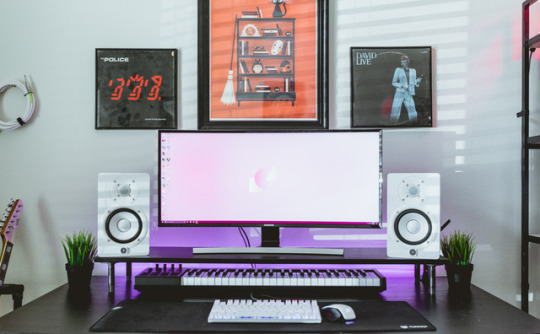


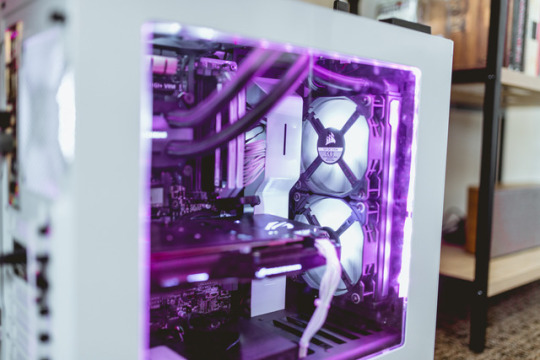
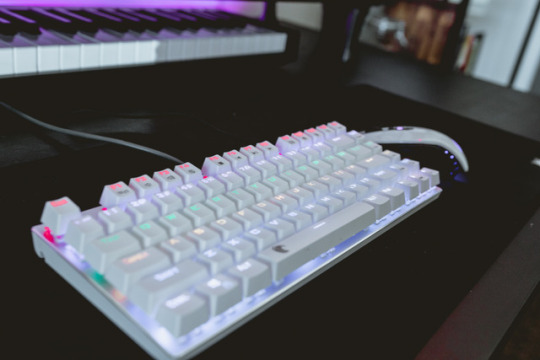

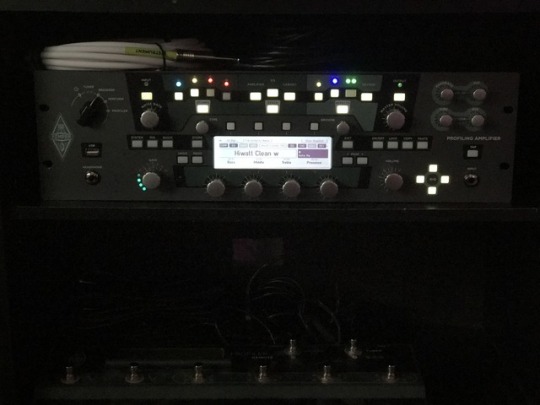
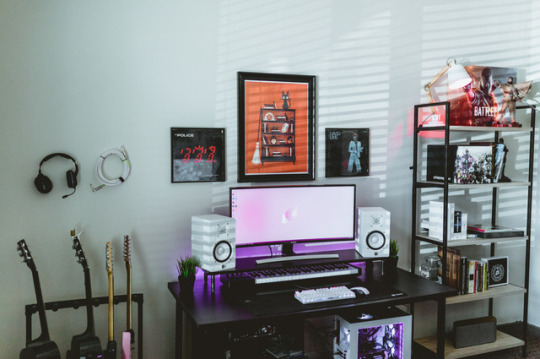
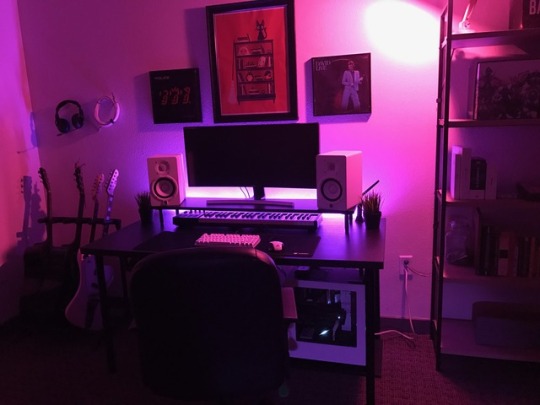
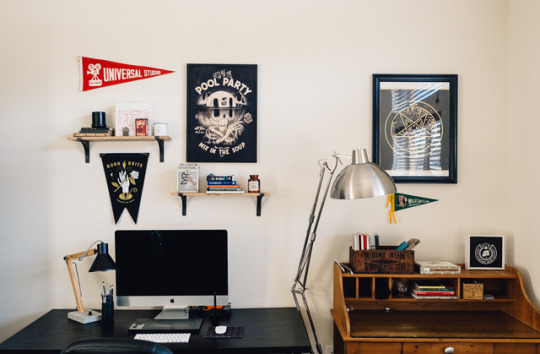
The My Two Sided Battlestation - Music / Gaming / Work Workspace
Here are some of the products that make this workspace an Amazing Workspace:
beyerdynamic DT 770 Pro 80 ohm Studio Headphones
Pyle Home PDSB12A 12-Inch 150 W Active Powered Subwoofer for Home Theater
iPhone 6 TPU Rubberized Case Black, Proud Army Dad Green Camo Design, DOES NOT FIT THE IPHONE 6 PLUS, USA 400
OCZ Storage Solutions Trion 100 Series 480GB SATA III 2.5" Solid State Drive TRN100-25SAT3-480G
Until Dawn - PlayStation 4
NZXT AC-HUEPS-M1 Hue+ Advanced Pc Lighting
Corsair HD Series, HD120 RGB LED, 120mm High Performance RGB LED PWM three fans with controller
Corsair Dominator Platinum Series 16GB (2 x 8GB) DDR4 DRAM 3000MHz C15 Memory Kit
ASUS GeForce GTX 1080 8GB ROG STRIX Graphics Card (STRIX-GTX1080-A8G-GAMING)
Intel Core i5-4690 Processor (6M Cache, 3.5 GHz upto 3.90 GHz) BX80646I54690
Timetec Hynix IC Apple 16GB Kit (2x8GB) DDR3 PC3-14900 1866MHz for iMac 17,1 w/Retina 5K display (27-inch Late 2015) A1419 (EMC 2834) MK462LL/A, MK472LL/A, MK482LL/A (16GB Kit (2x8GB))
Alesis Q49 49-Key USB MIDI Keyboard Controller
Intel 600p Series 256GB M.2 80mm SSD (SSDPEKKW256G7X1)
2GB Kit (2 x 1GB) DDR PC2700 Unbuffered Non-ECC 184-PIN DIMM - CT2KIT12864Z335
(100)12" Paper & Plastic Poly-Lined Record Inner Sleeves for LP Vinyl Record Albums
Focusrite Scarlett Solo (2nd Gen) USB Audio Interface with Pro Tools | First
NZXT S340 Mid Tower Computer Case, White (CA-S340W-W1)
UpBright NEW AC IN Power Cord Outlet Socket Cable Plug Lead For Kemper Profiling PowerHead 600-Watt Amplifier Profiler
Corsair Gaming M65 Pro RGB FPS Gaming Mouse, Backlit RGB LED, 12000 DPI, Optical
Wkae For iPhone 7 Rose Pattern Flexible Card Slots Leather Case with Holder & Card Slots & Wallet, Small Quantity Recommended before iPhone 7 Launching ( Color : Black )
E-Element Z-88 RGB LED Backlit Water-Proof Mechanical Gaming Keyboard with 81 Keys Anti-Ghost keys, DIY Blue Switches, Black
Women Harley Quinn Picture Girls Oxford Students Backpack Rucksack School Bag Travel Outdoor Backpack
RAINYEAR Protective 14 Inches Water Resistant Neoprene Computer Laptop Sleeve Case Portable Slim Fit Padded Sleeve Briefcase for Dell/HP/Asus/Acer/Samsung/Lenovo/Belkin Laptops(Black)
Mount-It! Full Motion Computer Monitor Wall Mount Fits TVs and Computer Screens With VESA 75 and 100 Universal Bolt Patterns, Swivel Tilt and Rotate, 33 Lbs Capacity
Samsung SE790 LS34E790CNS/GO 34" Screen LED-Lit Monitor
Replacement 2.0 USB to Micro-USB Nylon Cable for Kindle, Kindle Touch, Kindle Fire, Kindle Keyboard, Kindle DX HD, HDX, HDX 8.9" High-Speed A Male to Micro B(works with all Micro-USB Tablets)
Corsair Hydro Series H80i v2 Extreme Performance Liquid CPU Cooler, Black
0 notes